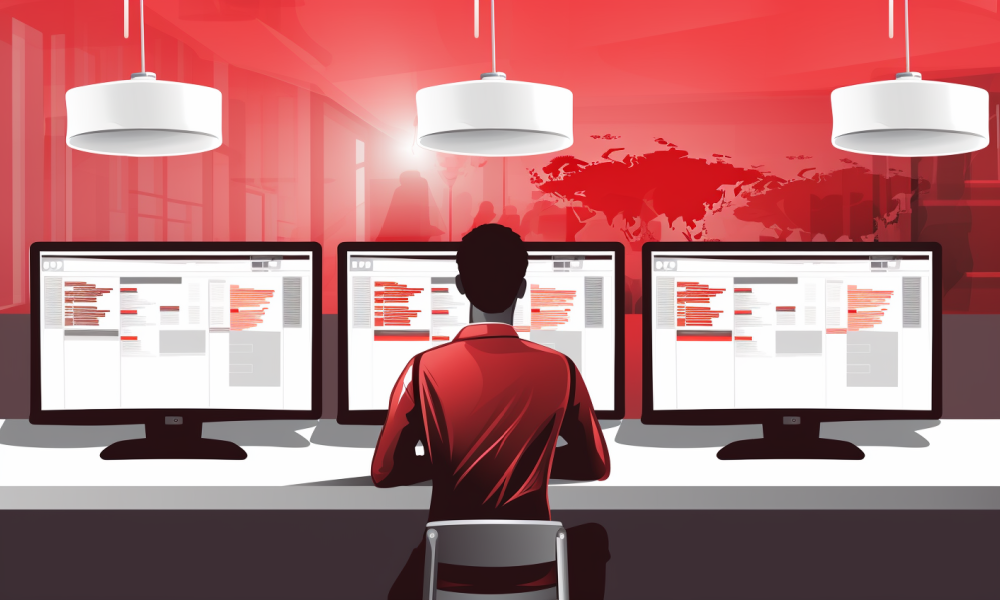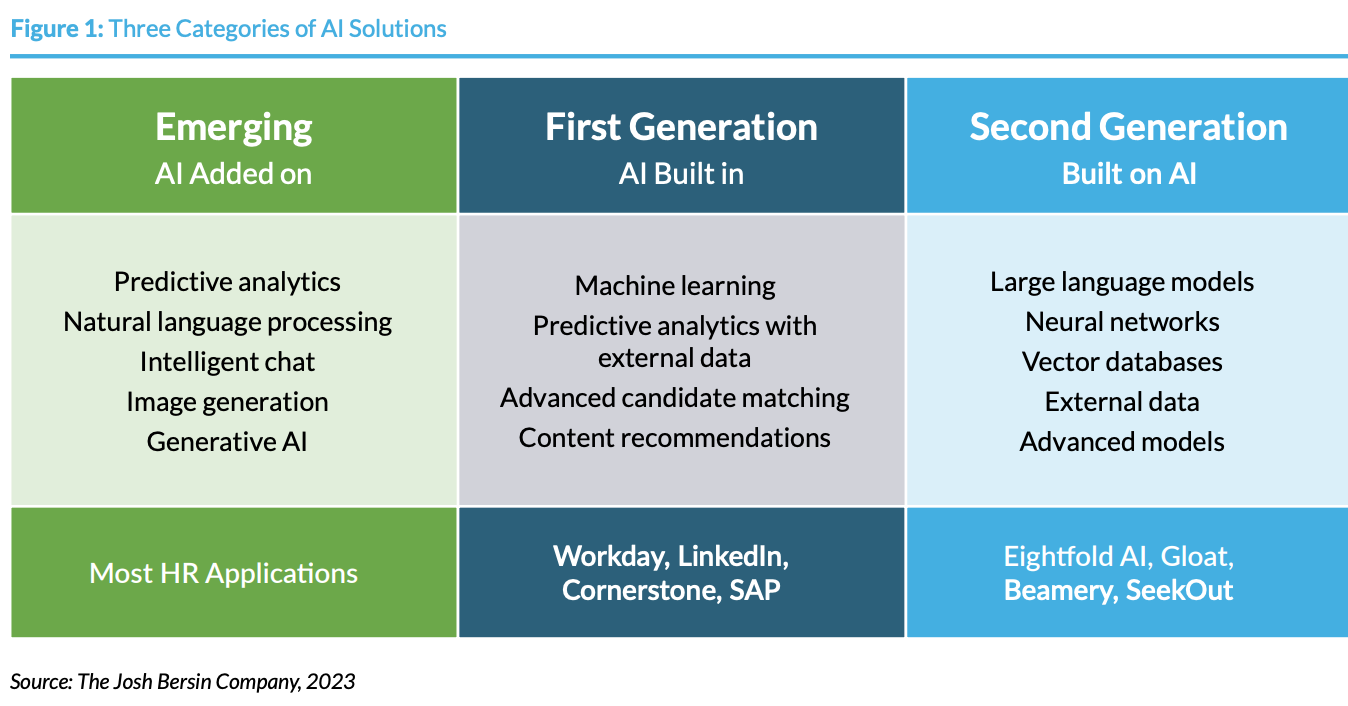Josh Bersin: Why second generation AI systems “add the most value” to HR
- 6 Min Read
Josh Bersin, global industry analyst and CEO of human capital advisory firm The Josh Bersin Company, breaks down emerging, first generation, and second generation AI tools and outlines how HR leaders can use second generation AI tools to optimize across the employee experience, from internal mobility to pay equity.
- Author: Josh Bersin
- Date published: Jul 20, 2023
- Categories

In his whitepaper on AI in HR, Josh Bersin argues that by distinguishing between emerging, first generation, and second generation AI systems and tools, HR leaders can truly understand what software will add the most value to their practice.
Bersin joins HRD Connect for another exclusive Q&A, breaking down the differences between bolted-on, built-on, and built-in AI HR systems. He outlines the potential benefits of prioritizing second-generation platforms, from job-to-candidate matching and internal mobility to pay equity and bias elimination.
1) What differences between second generation AI systems and first generation AI systems are most important for HR Leaders?
Josh Bersin: The big finding is that most HR tech vendors are ‘bolting on’ Generative AI tools that leverage OpenAI or other cloud services, typically to help write job descriptions, manage content, or create assessments. These are all great, and vendors will add many of these to virtually every HR system. We call them emerging AI HR.
Beyond that, the big ERP (enterprise resource planning) vendors are all adding machine learning into their systems to help analyze data and improve the usability of their systems. These are first generation AI systems.
Lastly are second generation AI platforms. These are built on entire LLMs (Large Language Models) and neural network systems specifically designed for HR. These do much more and can be used for skills inference, job-to-candidate matching, internal mobility, and even pay equity analysis. They are essentially wholesale replacements of many traditional transaction systems.
HR leaders need to know how to look at them as highly strategic data platforms that complement and possibly eventually replace the core HCM (Human Capital Management) itself. The core HCM systems simply were not designed to work this way.
2) How can HR teams use second generation AI capabilities such as skill adjacencies to guide internal mobility and succession planning?
Josh Bersin: Right now, one of the biggest problems HR faces is hiring in a tight labor market and finding internal candidates for opportunities, both to improve engagement and also to fill slots for important new skilled jobs.
Second generation AI platforms facilitate this entire process, from assessing the skills needed in a position to finding unbiased good-fit candidates inside and outside the company, and even to looking at people who are highly skilled and ready for promotion. We call this Talent Intelligence, and it’s a leapfrog technology that tends to supersede the ERP/HCM platforms.
Most companies first use these tools for recruiting or internal mobility. They then soon find that they can use this new employee platform for skills identification, job matching, hiring, internal mobility, and talent development. It is replacing the old world of talent management systems.
3) How do second generation systems eliminate bias?
Josh Bersin: AI-based systems base employee matches on lots of unbiased data. They might draw on where someone has worked, who they have worked with, and what projects they have completed to infer their skills.
This means there is much less bias in the decision-making process, rather than a judgment of ‘does this person look like the right person?’ Often, it leads to hiring someone who was unexpectedly qualified rather than the obvious but not perfect fit.
The same thing is starting to take place for promotion and pay. When it’s time to look for promotional opportunities or successors, the system can show you people with exceptional skills and experience based on AI inference, not just reputation. Again, this removes or reduces bias.
For pay, companies are just now experimenting with pay by looking at pay levels against this data. They find all sorts of reasons why they are underpaying or overpaying people with very exceptional skills based on when they hired them, where they hired them, and so on. It will become a fantastic tool to fix pay equity problems, which we find 95% of companies have barely started to address.
4) How do you expect to see these tools disrupt pay equity, promotion, and even performance management?
Josh Bersin: Second Generation AI HR Talent Intelligence tools are going to disrupt and replace many traditional approaches to pay and performance. Incidentally, such vendors haven’t designed these tools for this purpose yet. But the amount of data they capture and the way they can build models of performance will let companies see who the truly high performers are, rather than who was in the right place at the right time.
People development issues are always open for improvement, and the vendors are just starting to address them now. Certain tools, for example, can already find successors to any role throughout your organization using AI-based inference, which clearly opens the door to far less bias in promotion and succession management.
5) How can HR leaders win investment in ‘built-on’ systems if procurement teams would prefer to rely on ‘built-in’ and ‘added-on’ applications they perceive as lower risk?
Josh Bersin: It appears that ‘built-in’ and ‘added-on’ AI will be in every HR tech product. But it’s the second generation AI systems that are going to add the most value over time. Things like ‘autocomplete’ or ‘push a button to generate a document’ will soon be commodities, while a neural-net-based LLM for Talent Intelligence will always be a huge competitive advantage.
This could start with better targeting and reducing the time to hire, or in identifying previously hidden talent pipelines, among many, many use cases. By overcoming these AI barriers and appreciating those benefits, HR leaders will be in a strong position to make the business case and bring the rest of the company with them. But to maximize the benefits of incorporating these second generation systems into their HR processes, HR leaders need to dispel their fear of all things AI, and become more comfortable with the technology and its huge potential for human capital management.
6) What questions can HR leaders ask to keep their AI vendors accountable and mitigate the risk of using inaccurate, biased, or unfair software?
Josh Bersin: This is a big issue for vendors. Buyers ask vendors for information on their bias elimination, transparency, explainability, and trust features. But you also need to ask them what legal reviews they’ve been through, how big their data set is, how they remove bias, and how they trained their systems. Just asking these questions will show how far ahead some vendors are.
________________
Josh Bersin is a global industry analyst and CEO of human capital advisory firm The Josh Bersin Company.









